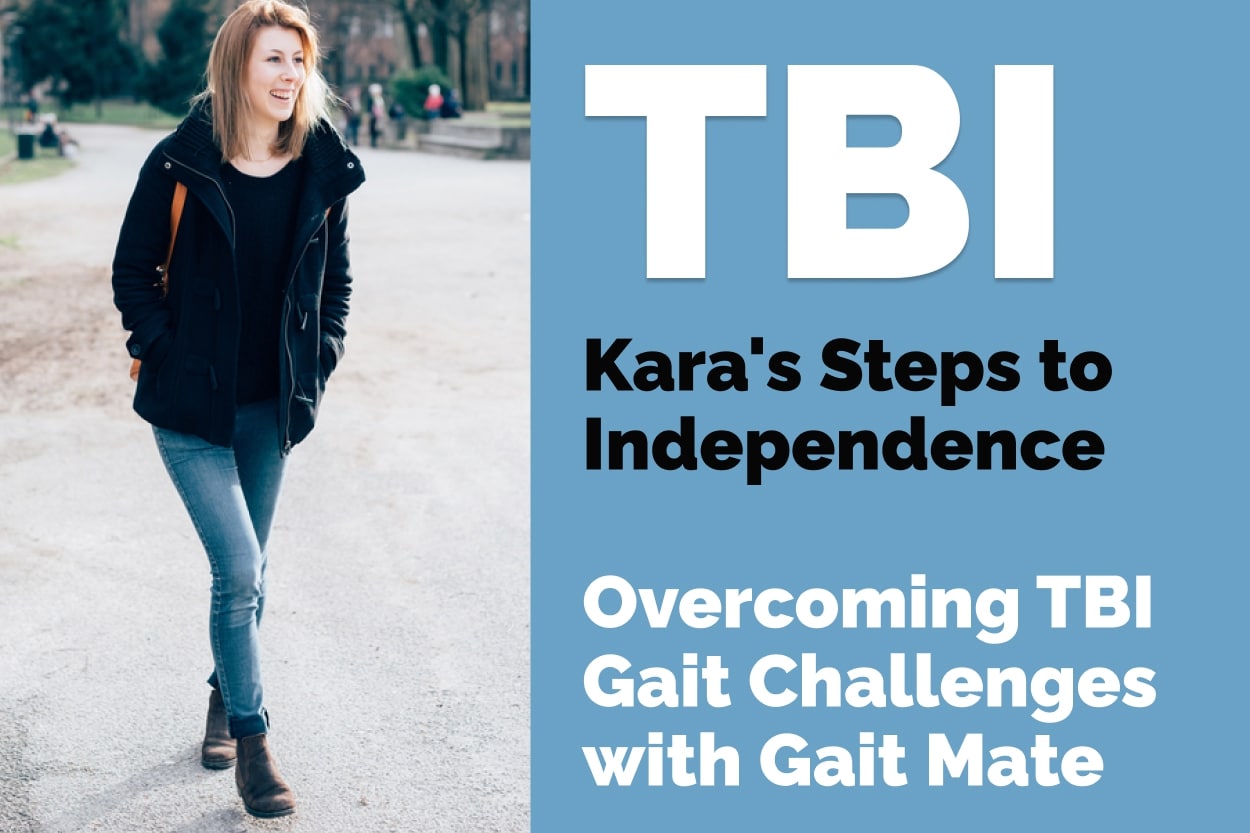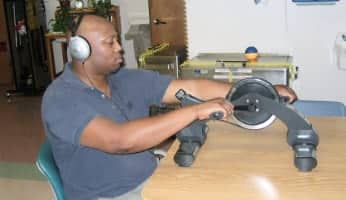Kara’s Steps to Independence: Overcoming TBI Gait Challenges with Gait Mate

Home - Testimonials - Adult Testimonials - Kara’s Steps to Independence: Overcoming TBI Gait Challenges with Gait Mate

Kara’s Steps to Independence: Overcoming TBI Gait Challenges with Gait Mate
Kara is a 23-year old female who suffered a severe TBI in June 2002, secondary to a MVA. She had significant impairments in strength, coordination, motor planning, balance, and gait.
Kara had received extensive rehab services prior to being referred to physical therapy again in March 2009 because she was complaining of right knee pain and balance deficits. She ambulated without an assistive device but her gait was characterized by lack of heel strike on the right heel with significant knee hyperextension in stance phase.
She demonstrated asymmetrical weight bearing and stride lengths, taking longer step with her right leg but had decreased stance time phase on the right.
Kara had increased trunk sway with a Trendelenburg type movement with her shoulders during stance phase on right LE, where she quickly dropped her right shoulder to counterbalance the weight shift.
Kara was able to achieve heel strike at initial contact of stance phase only 25% of the time. She completed the Timed Up and Go in 14 seconds and was able to walk 400 feet during the 3-minute walk test.
In addition, Kara complained of right knee pain and rated the pain at 4/10 on the lateral aspect of her knee with ambulation. There was concern that her current gait pattern, which was characterized by significant right knee hyperextension, would cause degeneration if it continued in this fashion.
Kara was adamant about not wanting to brace her knee to prevent future degeneration.
The functional outcome Kara hoped to achieve was to improve her overall gait quality, gait speed, strength, and to decrease right knee pain. She hoped to go to college in the near future and wanted to be able to walk around the campus.
About the Gait Mate
The Gait Mate is a therapy modality for improving a patient’s:
- Stride Length
- Heel Strike
- Gait Stamina
- Weight Shifting
- Quality of Movement
It is an extension of the Interactive Metronome which has been used by Physical and Occupational Therapists for almost ten years to assess and treat motor planning, sequencing, coordination and balance.
The Gait Mate makes IM’s formerly static exercises more functional and allows the patient to work on these neurological processes while walking around the gym or up and down the hall. The therapist inserts a wireless insole into the patient’s shoe that detects when the patient performs a heel strike. The patient hears a beat through wireless headphones or speakers and is asked to match the cadence provided.
The Gait Mate provides the patient with auditory feedback as they walk instructing them to speed up if they are walking too slowly or to slow down if they are shuffling or dropping their foot too quickly. The patient receives no positive feedback if his/her heel doesn’t strike the ground.
Treatment
The Gait Mate was not initially incorporated into Kara’s treatment sessions. She was seen for six treatment sessions that included strengthening, neural stretches, balance exercises, gait training, and functional e-stim to improve coordination, balance, and timing with gait. However, the physical therapist noted that her gait pattern significantly improved when she concentrated but this was not functional.
When Kara intently focused on gait biomechanics, her gait speed reduced by 50% and she was unable to perform any other task (i.e. talking, carrying objects, decision making). However, she reported her right knee pain decreased to 2/10 when she concentrated on gait biomechanics.
Kara needed to develop better timing with her walking pattern. She had the strength and motor control to walk more correctly, but the sequence wasn’t coordinated and wasn’t occurring automatically.
To improve timing and coordination, the Gait Mate was introduced in the seventh treatment session.
Outcome
Kara was seen for a total of 18 treatment sessions. The Gait Mate was incorporated in the last ten sessions. Her gait pattern significantly improved. She was able to achieve heel strike 100% of the time when walking on a level surface, did not fatigue, and her knee hyperextension decreased significantly. She reports her right knee pain is resolved with functional mobility. The 3-Minute Walk Test was administered at the end of treatment, and Kara can now walk 600 feet in the time allowed.
Shelley Thomas, MPT
Idaho Elks Rehab
Boise, ID






